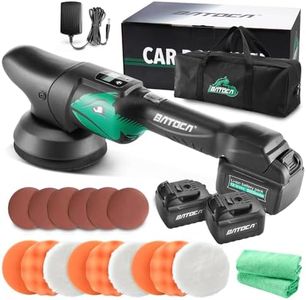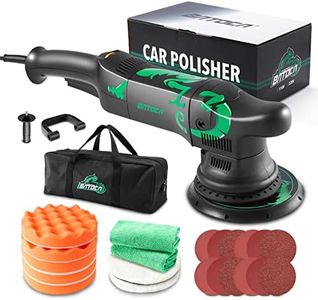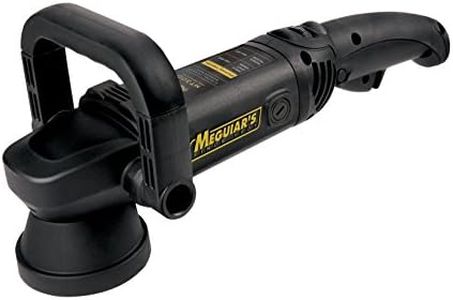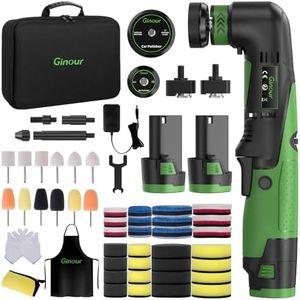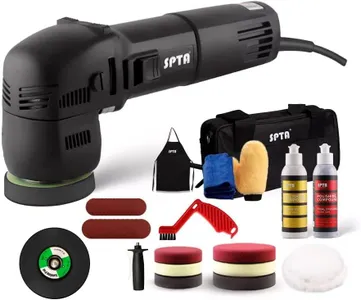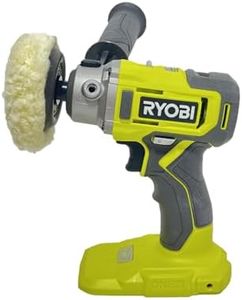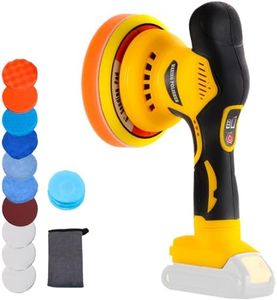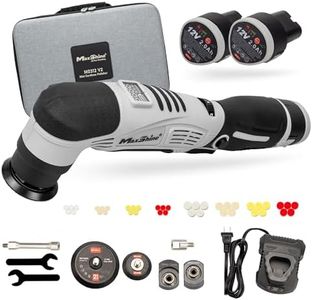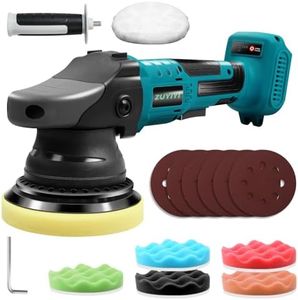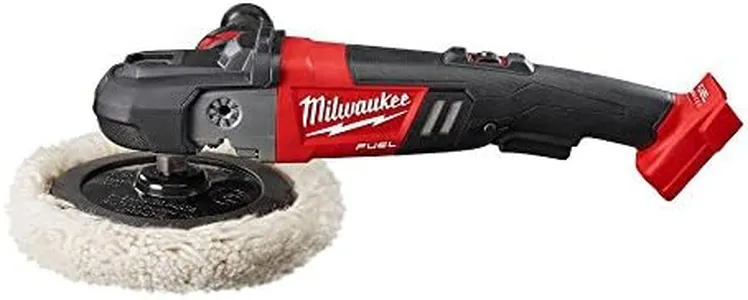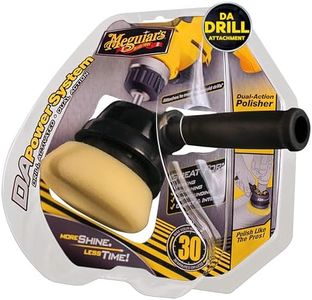We Use CookiesWe use cookies to enhance the security, performance,
functionality and for analytical and promotional activities. By continuing to browse this site you
are agreeing to our privacy policy
10 Best Dual Action Polishers
From leading brands and best sellers available on the web.Buying Guide for the Best Dual Action Polishers
Choosing the right dual-action polisher can greatly improve your car care routine, making paint correction, waxing, and polishing both easier and more effective. Dual-action polishers, also known as DA polishers, are popular because they are safer than rotary tools and less likely to damage your paint. To make the best choice, you should consider your experience level, the types of projects you want to tackle, and how frequently you plan to use the tool. Focusing on the key specifications will help you find a machine that feels comfortable and delivers the results you’re after.orbit (throw) sizeThe orbit, or throw size, is the diameter of the circular path the pad travels as the tool operates. This matters because a larger throw covers more area more quickly and can correct paint faster, while a smaller throw offers more control in tight spaces and is gentler for beginners. Orbit sizes generally range from about 8mm to 21mm. Smaller orbits (8-12mm) are good for those new to polishing, for working in tricky areas, or for light polishing. Mid-range throws (12-15mm) are versatile for general use on most paints. Larger throws (15-21mm) are meant for correcting large surfaces efficiently but may take some practice to control. Consider your experience and vehicle type: smaller throw for safety and detail, larger for speed and big panels.
motor powerMotor power, usually measured in watts or amps, is all about how much force the polisher can apply and maintain even under pressure. A more powerful motor helps you work faster and handle tougher jobs without stalling. Lower-powered polishers are fine for basic detailing and regular use, while more powerful options are better for heavy correction or professional results. For casual or beginner use, moderate power (around 500W or so) is enough. If you plan on extensive paint correction or working on hard paint types, a higher power motor (700W and up) will serve you better. Match the motor power with your level of usage and type of detailing you plan to do.
speed rangeSpeed range indicates the number of orbits per minute (OPM) the polisher can reach. A wider speed range lets you slow down for delicate work like waxing or ramp up for polishing and correction. Entry-level DA polishers often offer speeds from 2,000 to 6,000 OPM or similar. Lower speeds are ideal for applying waxes or glazes; mid-speeds suit general polishing, and higher speeds handle severe defects or paint correction. Consider your main tasks: choose a polisher with enough low-end for protective steps and high-end speed for correcting tougher issues. Flexibility is valuable if you want an all-around machine.
pad sizePad size refers to the diameter of polishing pads the machine will accept, commonly 5-inch or 6-inch pads. Smaller pads allow for precise work in tight areas, curved surfaces, or on smaller vehicles. Larger pads cover broad panels like hoods or roofs more efficiently but may be harder to control in tight spaces. If you mostly work on sedans or larger vehicles and want to speed up the process, a 6-inch pad makes sense. For compact cars or detailing complex areas, a 5-inch pad offers better maneuverability. Some machines allow you to swap backing plates, letting you use both pad sizes as needed.
weight and ergonomicsWeight and ergonomics refer to how heavy the tool is and how comfortable it is to use for long periods. Lighter polishers are easier to control, reduce fatigue, and are better for beginners or people working on vertical panels or overhead. Heavier machines may feel sturdier and sometimes help with downward pressure but can be tiring to use for long sessions. Consider your physical comfort and the size of your projects: pick a polisher that feels balanced in your hand and won’t be exhausting to use. If possible, test the grip or read reviews focusing on comfort.
noise and vibrationNoise and vibration mean how much sound the polisher makes and how much it shakes during operation. Quieter and smoother machines are more pleasant for longer detailing sessions and can cause less hand fatigue. While all DA polishers make some noise and vibration, better-designed machines keep both to a minimum. If you have sensitive hearing or plan to use the tool for hours at a time, pay attention to feedback on these factors.

